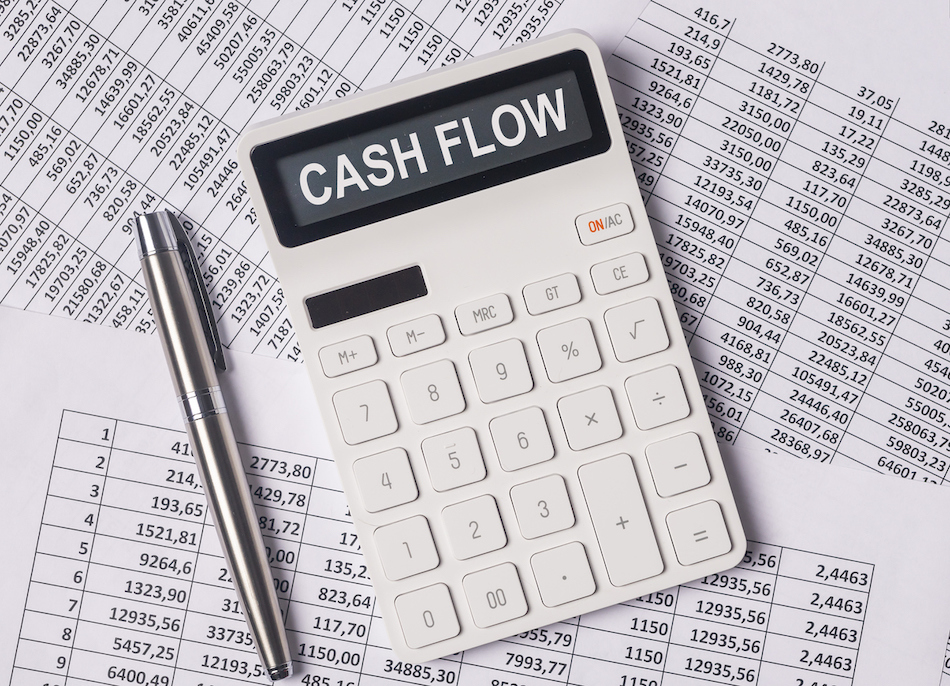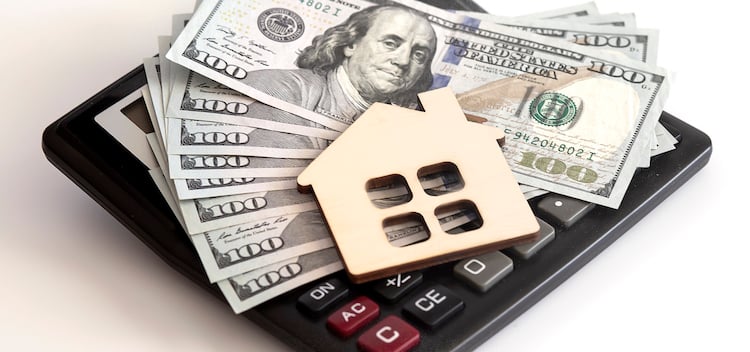One of the main reasons for investing in real estate is for the potential cash flow rental properties provide. While some investors use cash flow to supplement income or pay for personal expenses, others prefer to reinvest rental property cash flow to generate even more recurring cash flow.
In this article, we’ll look at the benefits of reinvesting rental property cash flow, discuss some of the most common ways to use reinvested cash flow, and explain how to reinvest cash flow and avoid taxes.
Key takeaways
- Cash flow is the money remaining after rental income has been collected and the operating expenses and mortgage have been paid.
- Some investors use rental property cash flow for personal uses, while others see more value in reinvesting in their businesses.
- Reinvested rental property cash flow can increase rental income, be used for down payments on additional rental properties, and build a portfolio of cash-flowing rentals.
Benefits of reinvesting rental property cash flow
With enough care and planning, cash flow from rental properties may let an investor switch from working full time to part time or quit a day job altogether. However, depending on an investor’s goals, it could make more financial sense to reinvest rental property cash flow today to have more money available in the future:
- Generate additional income: Real estate investors reinvest cash flow for a similar reason that stock market investors reinvest dividends. By using cash flow to buy more income-generating assets, investors may be able to increase wealth over time with multiple cash flow streams.
- Grow a real estate portfolio faster: The snowball effect in real estate occurs when an investor saves all of the cash flow until there are enough funds for the down payment on another rental property. Cash flow from both rental properties is then saved until funds are available for a third rental property, and so on.
- Get better loan terms: Saving cash flow to make a larger down payment on an additional rental property is another way to reinvest cash flow. Making a down payment of 20% or more helps investors avoid having to pay private mortgage insurance (PMI) and may result in a lower interest rate and more attractive loan terms. That’s because a bigger down payment means an investor has more skin in the game and represents less risk to a lender.
How to reinvest cash flow from rental property
Here are ways to reinvest rental property cash flow to potentially increase rental income, raise capital to purchase additional rental properties, and build a portfolio of cash flowing rental properties over time:
1. Make improvement to increase rental income
Putting cash flow back into a rental property by making improvements and upgrades can help to increase rental income. That’s because tenants are often willing to pay a higher rent in exchange for better amenities, such as extra space for a home office or a remodeled kitchen or bath.
As a rule of thumb, most property improvements need to be added to the cost basis of a rental property and depreciated over time. So, in addition to generating additional rental income, an investor may be able to claim a larger depreciation expense to reduce taxable net income.
Claiming depreciation is something the Internal Revenue Service (IRS) requires real estate investors to do. However, there are only so many hours in a day, and calculating and keeping track of capital expenses and depreciation can be complicated and time-consuming. Signing up for a free account with Stessa makes it much easier to automatically track income, expenses, capital upgrades, annual depreciation, and changes in property value.
2. Raise funds for a down payment
Using free cash flow to pay down a mortgage balance faster can be another good way to reinvest rental property cash flow. A lower loan balance combined with appreciation in property value could provide the funds for the down payment on another rental property in just a few years.
The following example uses the following assumptions:
- Home prices increase by 5% each year.
- The mortgage balance reflects the year-end balance after making scheduled principal and interest (P&I) payments.
- Reinvested cash flow is used to pay down the mortgage faster.
- Cash-out refinance is used to pull equity out of the rental property as the down payment for a second rental home.
- The investor keeps 20% equity in the first home when doing the cash-out refi.
| Year 1 | Year 2 | Year 3 | Year 4 | |
| Home value | $150,000 | $157,500 | $165,375 | $173,644 |
| Mortgage balance | $118,240 | $116,236 | $114,139 | $111,946 |
| Reinvested cash flow | $2,400 | $2,400 | $2,400 | $2,400 |
| New mortgage balance | $116,000 | $111,440 | $106,673 | $101,685 |
| Equity | $34,000 | $46,100 | $58,702 | $71,959 |
After 4 years, an investor could use a cash-out refinance and pull a little more than $37,000 in equity out of the first rental property to use as a 20% down payment on a second rental property, while still keeping 20% equity in the first home:
- Property value at Year 4: $173,644
- New loan balance after cash-out refinance: $138,915
- Equity of 20% kept in the first home after refinancing: $34,729
- Equity pulled out to use as down payment for another rental property: $71,959 - $34,729 = $37,230
Assuming an investor purchases a second home for $173,644, the equity of $37,230 pulled out of the first home could be used for a 21% down payment on a second rental property.
Note that our example assumes that home prices consistently increase by 5% each year, that reinvested cash flow remains the same, and that rent prices and net cash flow do not increase.
3. Build a rental property portfolio
Now, let’s look at how an investor could reinvest rental property cash flow from one property to buy an additional rental property every 5 years. This simplified example uses the following assumptions:
- Rental #1 is purchased with cash.
- A 20% down payment for additional rental properties is raised by saving rental income.
- Home prices increase by 5% each year.
| Year 1 | Year 5 | Year 10 | Year 15 | Year 20 | |
| Rental #1 value | $100,000 | $128,000 | $163,300 | $208,500 | $266,000 |
| Net cash flow | $4,800 | $24,000 | $48,000 | $72,000 | $96,000 |
| Rental #2 value | $128,000 | $163,300 | $208,500 | $266,000 | |
| Net cash flow | $2,600 | $13,000 | $26,000 | $39,000 | |
| Rental #3 value | $163,300 | $208,500 | $266,000 | ||
| Net cash flow | $3,300 | $16,500 | $33,000 | ||
| Rental #4 value | $208,500 | $266,000 | |||
| Net cash flow | $4,200 | $21,000 | |||
| Rental #5 value | $266,000 | ||||
| Net cash flow | $5,300 | ||||
| Total cash saved | $4,800 | $26,600 | $38,700 | $60,440 | $94,340 |
| Less down payment | $25,600 | $32,660 | $41,700 | $53,200 | |
| Remaining cash | $1,000 | $6,040 | $18,740 | $41,140 | |
| Total property value | $100,000 | $256,000 | $489,900 | $834,000 | $1,330,000 |
Note that the above simplified example assumes that rent prices and operating expenses remain unchanged over the entire 20-year holding period and that no capital improvements or upgrades are made to increase property value or rental income.
Reinvest cash flow to avoid taxes: 2 ways
Some of the biggest benefits of owning rental property are tax benefits. Investors can deduct operating expenses, mortgage interest, and other business-related expenses, such as traveling to an out-of-town rental property and continuing education tuition from taxable net income.
However, in some situations, investors also may be able to reinvest rental property cash flow and delay paying taxes:
Self-directed individual retirement account (SDIRA)
Investors may convert an existing retirement account, such as a 401(k) or SEP-IRA for self-employed people, into an SDIRA to buy and hold real estate. People who are just getting started with their careers may also set up an SDIRA for real estate.
Because a SDIRA is a retirement account, any income generated within the SDIRA is not taxed and grows tax-free until withdrawals begin. Cash flow within an SDIRA for real estate can be used to pay for property operating expenses, make upgrades and improvements to increase rental income, and purchase additional rental property to hold within an SDIRA.
1031 exchange
Cash generated from the profits made when a rental property is sold is subject to depreciation recapture tax and capital gains tax. However, investors may delay paying tax on capital gains and depreciation recapture by conducting a 1031 exchange.
With a 1031 exchange, an investor uses the profits from the sale of one investment property to purchase one or more replacement investment properties within 180 days. Rules and timelines of a Section 1031 exchange are very specific, and not meeting certain deadlines or requirements could result in an investor paying capital gains, even if a replacement property is purchased.
For these reasons, investors may wish to consult with their financial planners or 1031 exchange facilitators to learn more about tax-deferred exchanges.
Closing thoughts
Although it may sound surprising, the cash flow from just one rental property purchased today may generate enough cash flow to purchase another income-generating home in just a few years. Reinvesting rental property cash flow can be a good way to exponentially increase recurring income and personal wealth and meet personal financial goals, such as leaving a full-time day job or taking early retirement.










